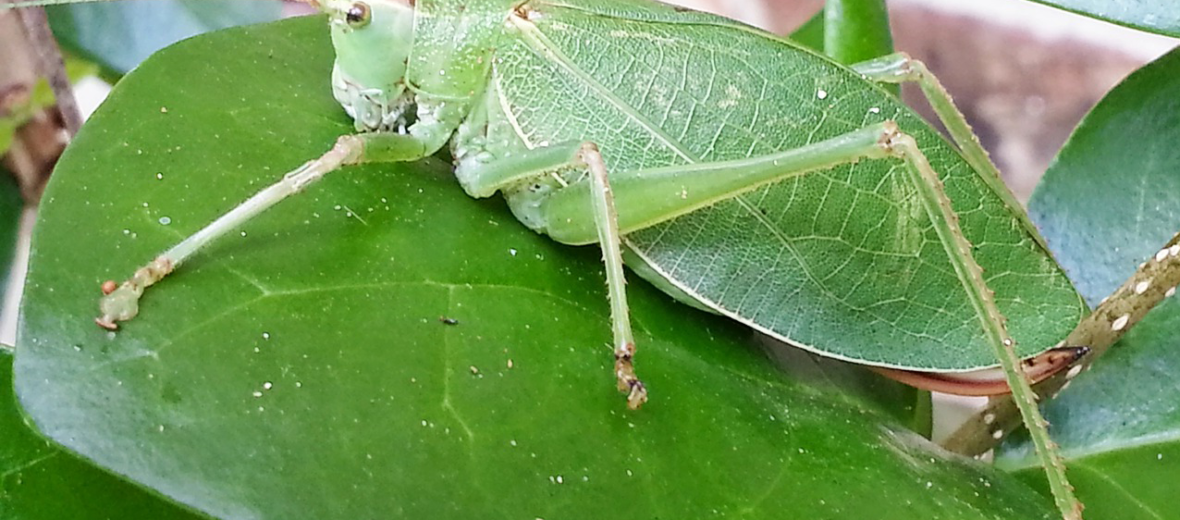
The katydid, aka bush cricket or long-horned grasshopper, lives on every continent, sans Antarctica. There are more than 6,400 known species of these critters. They can tolerate a wide range of habitats from tropical to cool, dry temperate, and even hot desert environments. The katydid is an insect that is listed in a wide variety of statuses by the IUCN. They are listed as everything from Least Concern to Critically Endangered, and everything in-between.
First the Stats…
Scientific name: Tettigoniidae
Length: Up to 4.7 inches
Lifespan: Up to 1+ year
Now on to the Facts!
1.) Katydids are typically nocturnal (active at night).
2.) These critters are omnivores (eat plant and animal matter) that eat plants as well as prey on other insects and even small vertebrates.
3.) Birds, bats, frogs, snakes, spiders, and other insects all prey on katydids.
4.) These critters are typically green. However, they can also be pink, yellow, and other colors.
5.) If threatened, many species release a foul smelling odor.
But wait, there’s more on the katydid!
6.) Like grasshoppers and crickets, these insects have ears on their legs.
7.) Males signal their location to females via tremulations (trembling or vibrating).
Did you know…?
The antennae of a katydid can be as long as their entire body.
8.) Katydids are polygamous (1 male mates with several females).
9.) Females find the perfect stem on the perfect plant to chew a hole in, in which to lay her up to 20 eggs.
10.) The females dies up to 2 weeks after laying her eggs.
But wait, there’s more on the katydid!
11.) The song of a katydid can be quite loud and produces up to 20 KHz of volume.
12.) They get their name from the sound they make, “Kay-tee-did” or “Kay-tee-did-did”.
Did you know…?
The tuberous bush cricket (Platycleis affinis) has the largest testes in proportion to body mass of any animal recorded.
13.) During the day, they take up a diurnal (daytime) roosting posture that causes predators to believe they are either dead or simply a plant leaf.
14.) Some are also considered pests by many commercial crop growers and are thus sprayed with poison to halt their growth and distribution.
15.) Males have sound-producing organs that are found on the hind angles of their front wings. Some species’ females can also produce sound.
Now a Short Katydid Video!
Be sure to share & comment below! Also, check out the Critter Science YouTube channel. Videos added frequently!
Want to suggest a critter for me to write about? Let me know here.



